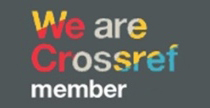ANALISIS DESAIN ILUSTRASI KEMASAN BERAS ECOKO GREEN PROJECT MELALUI KAJIAN SEMIOTIKA
DOI:
https://doi.org/10.51804/deskovi.v3i2.720Keywords:
ecoko green project, ilustrasi, kemasan, pertanian, semiotikaAbstract
Tulisan ini dibuat guna memahami tanda makna komunikasi visual yang terdapat pada ilustrasi kemasanberas dari Ecoko Green Project,serta pesan komunikasi visual yang terkandung pada ilustrasi pada kemasan beras tersebut.Pengumpulan data dalam penelitian ini dilakukan dengan cara observasi dengan datang ke studio Oka Astawa dan mendapatkan foto-foto mengenai kemasan beras yang berisi karya dari Oka Astawa. Data yang terkumpul kemudian dianalisis dengan menggunakan analisis kualitatif dari teori semiotika Charles Sanders Pierce ikon, indeks, dan simbol. Hasil penelitian tersebut menunjukkan bahwa 1.) Ikon pada ilustrasi kemasan beras Ecoko Green Projectadalah penggambaran petani itu sendiri karena memiliki kemiripan dengan bentuk aslinya yaitu penggambaran seorang petani. 2.) Indeks pada ilustrasi kemasan beras tersebut adalah penggambaran gedung dan jalan pada tubuh petani pertama, serta dolar dan padi yang tidak seimbang pada ilustrasi kedua merupakan penggambaran sebab akibat. 3.) Simbol pada ilustrasi kemasan beras tersebut adalah caping(topi petani) serta padi pada ilustrasi kemasan beras yang pertama dan kedua merupakan simbol dari pertanian itu sendiri, dan pada ilustrasi kemasan kedua ada dua simbol tambahan yaitu dolar dan dasi berbentuk ular, dimana kedua simbol tersebut menggabarkan petani ditindas oleh uang dan penguasa.
This paper is made to learn the meaning sign of the visual communication that contained in the illustration of rice packaging from the Ecoko Green Project, as well as the visual communication message in that illustration on the rice packaging. The collected data in this study was carried out with observation by coming to the Oka Astawa studio and getting photos of rice packaging containing the works of Oka Astawa. The collected data is then analyzed using qualitative analysis and Charles Sanders Pierce's semiotic theory of icons, indexes, and symbols. The results of these studies indicate that 1.) The icon in the Ecoko Green Project rice packaging illustration is a description of the farmer itself because it has a similarity to the original form, which is the description of a farmer. 2.) The index in the illustration of rice packaging is the depiction of buildings and roads in the body of the first farmer, then the dollar and rice that is not balanced in the second illustration are depictions of cause and effect. 3.) The symbol in the illustration of the rice packaging is the caping (farmers' hat) and the rice in the first and second illustration of the rice packaging is a symbol of the agriculture itself, and in the second packaging illustration there are two additional symbols, the dollar and a snake-shaped tie, where both of the symbols described that the farmers being oppressed by money and the authority.
Downloads
References
Klimchuk, Marianne dan Sandra A. Krasovec. 2006. Desain Kemasan. Jakarta: Erlangga.
Kotler dan Keller. 2009. Manajemen Pemasaran. Jilid I. Edisi ke 13. Jakarta: Erlangga.
Kris Budiman. 2011. Semiotika Visual konsep, Isu, dan problem Ikonitas.Yogyakarta: Jalasutra.
Rangkuti, Freddy. 2010. Analisis SWOT: Teknik Membedah Kasus Bisnis. Jakarta: Gramedia.
Simamora, Bilson. 2007. Panduan Riset dan Perilaku Konsumen. Jakarta: Gramedia.
Uhar Suharsaputra. 2014. Metode Penelitian, kuantitatif, Kualitatif, dan Tindakan. Bandung: PT.Refika Aditama.
Wisnuardhana, Ida Bagus (2020, Mei 5). Lahan Sawah di Bali Berkurang 550 Hektare per Tahun, Tabanan Tertinggi.
Downloads
Published
How to Cite
Issue
Section
License
With the receipt of the article by DADJ Editorial Board and the decision to be published, the copyright regarding the article will be transferred to DADJ. The copyright transfer form can be downloaded here.
DADJ has the right to multiply and distribute the article and every author is not allowed to publish the same article that was published in this journal.

DESKOVI: Art and Design Journal is licensed under a Creative Commons Attribution 4.0 International License.
Under the following terms:
Attribution — You must give appropriate credit, provide a link to the license, and indicate if changes were made. You may do so in any reasonable manner, but not in any way that suggests the licensor endorses you or your use.






